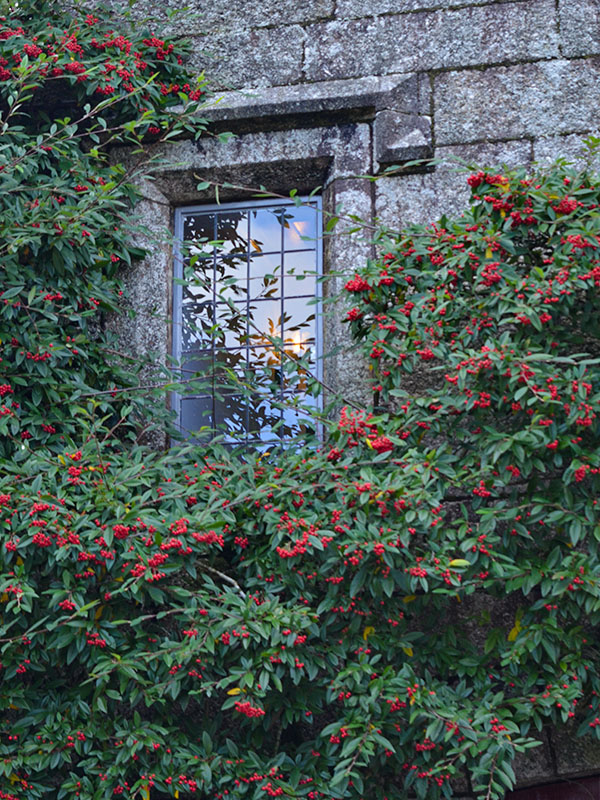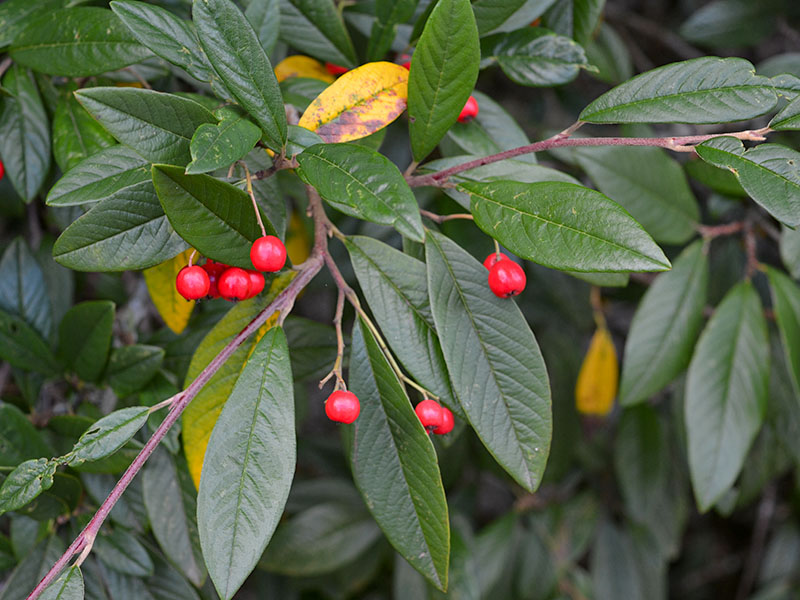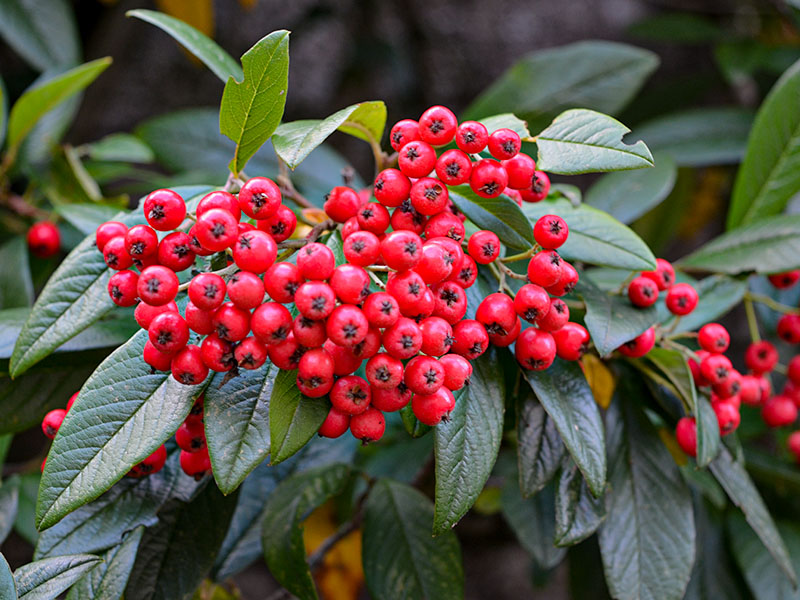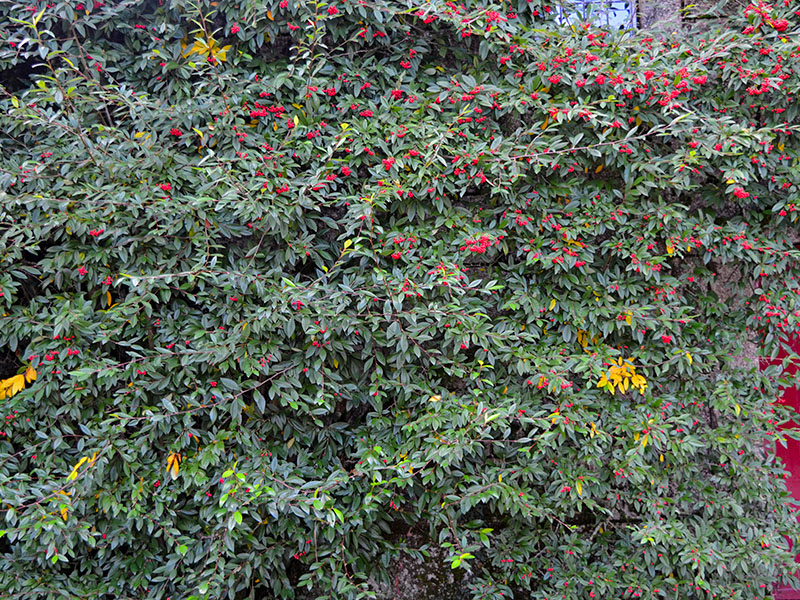
Woody > Cotoneaster > Cotoneaster frigidus > Cotoneaster frigidus 'Cornubia'
Cotoneaster frigidus
'Cornubia'
Cornubia Cotonester
Origin: Southwestern China and the Himalayas.
| Family |
| Rosaceae |
| Genus |
| Cotoneaster |
| Species |
| frigidus |
| Cultivar |
| 'Cornubia' |
| Category |
| Woody |
| Type |
| Shrub (evergreen) |
| Synonyms |
| Cotoneaster × watereri 'Cornubia', Cotoneaster frigidus 'Cornubia' |
| USDA Hardiness Zone |
| 6b - 7a |
| Canadian Hardiness Zone |
| 6b |
| RHS Hardiness Zone |
| H7 |
| Temperature (°C) |
| -20 to -15 |
| Temperature (°F) |
| 4 to 5 |
| Height |
| 4 - 8 m |
| Spread |
| 4 - 8 m |
Photographs
Description and Growing Information
Flowering Period
| General Description |
| A large evergreen growing upright during early life until spreading out further into maturity. Large white flowers bloom in the summer and are succeeded by red berries during autumn and winter. |
| Cultivation |
| Requires moderately fertile, well-drained soil. Can grow in both partial-shade or full sun. Stable in dry environments once established. |
| Growth |
| Slow |
| Pests |
| May be susceptible to brown scale, cotoneaster webber caterpillar and aphids including woolly aphid. May be susceptible to fireblight and honey fungus. |
| Habitat |
| Horticultural origin. |
| Notable Specimens |
| Lanhydrock Garden, Cornwall, England. |
| Propagation |
| Propagate from semi-ripe cuttings during the late summer. |
| Ethnobotanical Uses (Disclaimer) |
| Fruit is for ornamental purposes only. Ingestion may cause mild stomach upset. |




